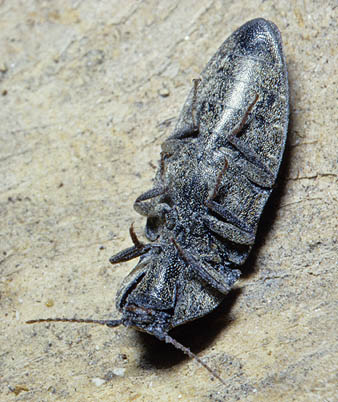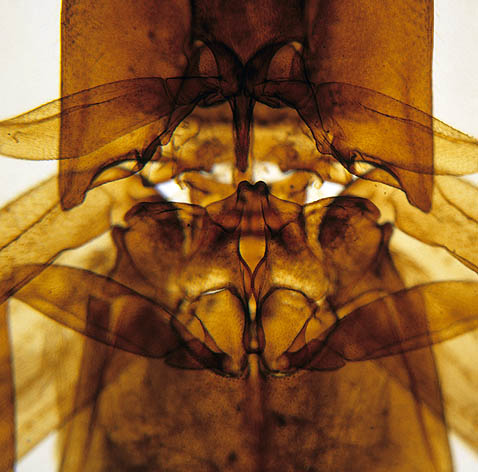The Click Beetle Dismantledby Wim van Egmond, the Netherlands Who hasn't ever dreamed of being a 19th century naturalist. Although life at that time wasn't easy for most people it was a great century for scientific discoveries. If you were lucky and came from a wealthy family you could spend all your time studying nature. You didn't have to do anything useful, a privilege nowadays only to be found with artists, these lucky creative people who can practise their hobby all day. |  |
Being an artist myself I can spend all my time with useless activities. This article is about one such pastime. It's about one of those discoveries you can do yourself with the aid of a microscope. Click beetles (order Coleoptera, family Elateridae) are elongated and flat and quite remarkable insects. They are beetles with short legs. The short legs in combination with the heavy armour usually could have created a problem when they would land on their back. Luckily the click beetle has a special trick to righten itself. If you find a click beetle it is easy to demonstrate this ability. Just place the insect upside down and after a couple of seconds you'll hear a 'click' and the insect jumps into the air. If it doesn't succeed in landing on its feet it will patiently try it again. It can also use this trick in defence against predators. But how does it work? |
I sacrificed a click beetle (and now you are reading this article, do share in the guilt if you like) and treated it with chemicals to make the chitin transparent and soft. You can use caustic soda, but beware, this is a risky operation. please read: A Few Risk, Hazard, and Safety Issues For Amateur Microscopists by Richard Howey. You can also observe the details of this insect under a stereomicroscope or with a good hand lens! With such tough insects it takes weeks before the insect becomes clear. After further treatment I made a prepared slide in Canada Balsam and I could observe it under the microscope. The micrographs I made are perhaps a bit confusing because you can see many details. The first micrograph shows the underside of the beetle. We see the connection between the thorax (body) and the abdomen (rear end) of the insect. We see two pairs of legs, the abdomen bears another pair of legs below not in view here. Between the pairs of legs stretch the wings of which one pair is hardened to form a protective shield, the distinctive feature of beetles. The equipment for the click trick can be seen in the center of the image. |
A stronger magnification shows the structure more clearly. Here we can see the projection situated on the thorax (top). This projection fits in a socket in the abdomen (below). We can now imagine what happens when the Click beetle does its click trick. 'It arches its body upward so that only the ends touch the ground, then straightens suddenly, causing the spine to slide into the groove.' Well, this is what I read when I did some futher study on click beetles in books and on the web. But I wonder, I am not convinced. Couldn't it be just the other way around? That the beetle first contracts its body so the spine anchors in the groove and when it stretches itself the spine slides out of the groove and there it goes! But it is December now and my click beetle lies dismantled, mounted in Canada Balsam, under a coverslip, unable to contract or stretch. Unable to give me the answer to my question. How I wish the winter will be over soon! |
Comments to the author Wim van Egmond are welcomed.
Visit the Micropolitan Museum
Microscopy UK Front Page
Micscape Magazine
Article Library
all material © Wim van Egmond

